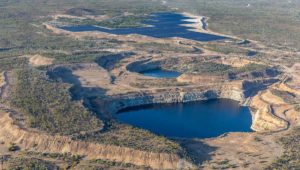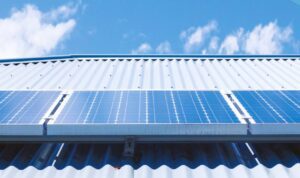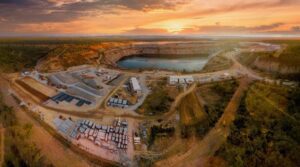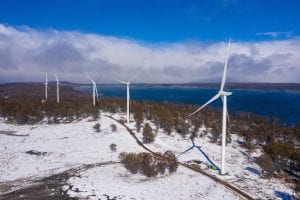Tasmania’s state owned network operator will push for the largest capacity option for a new undersea electricity link to mainland Australia, after publishing modelling that argues a larger inter-connector will deliver greater economic benefits, especially under a rapid transition to renewable energy.
TasNetworks published the results of modelling of the proposed MarinusLink interconnector, assessing the viability of four different capacities, ranging from 600MW to 1,500MW, which would significantly expand the amount of electricity that can be shared between Tasmania and mainland Australia.
While all four of the options were found to be financially viable, TasNetwork’s assessment found the largest option, adding 1,500MW of interconnector capacity, would generate the greatest financial benefit for the cost.
In a separate report, FTI Consulting forecast there would be substantial benefits for energy consumers as a result of the MarinusLink project – benefits that likewise grow with increasing adoption of renewable energy.
The Marinus Link forms the core part of Tasmania’s “battery of the nation” proposal, and which has inspired some developers to consider huge wind farm developments, such as those on Robbin Island and a new proposal for an offshore wind project near Burnie.
But the proposal, and the Robbins Island project in particular, have run into resistance from members of nearby communities, concerned by the ecological impacts of such projects, including from former Greens leader Bob Brown, who laments the project’s impact on the coastline and its potential impact on bird species.
The economic analysis, completed as part of the regulatory assessment of the proposed network investments known as RIT-T, found that the benefits of the project, through lower energy prices, would flow through to all states participating in the National Electricity Market.
It says the average wholesale electricity prices would fall by between $2.80 and $4.70 per MWh across all regions in a ‘central’ scenario, and between $6.20 and $9.80 per MWh under the ‘step change’ scenario where the transition to clean energy is more rapid.
The 1,500MW option would consist of two 750MW high voltage DC interconnectors, with the first stage proposed to be operational by 2027 and the second by 2029.
An expansion of the link between Tasmania and mainland Australia could incentivise further investment in new renewable energy projects in Tasmania, particularly new wind projects, while also underpinning Tasmania’s role as a provider of pumped hydro energy storage services.
“Accessing the existing spare and refurbished on-demand hydro capacity, along with cost-competitive pumped hydro potential, provides lower-cost on-demand energy compared with other solutions available to the NEM,” FTI Consulting senior managing director Jason Mann said.
“This, together with the new wind resources that are expected to be delivered in Tasmania, puts downward pressure on future wholesale energy prices for all customers in the NEM.”
Recent assessments, both from TasNetworks and Energy Security Board chair Kerry Schott, have suggested that Australia is already tracking ahead of AEMO’s ‘step change’ scenario, which has predicted the market share of renewables could grow as high as 94 per cent by 2040.
TasNetwork’s assessment, which considered the potential benefits under different scenarios aligned with AEMO’s Integrated System Plan, found that the benefits of the MarinusLink would be larger under scenarios that assume a faster transition to renewable energy.
For example, under AEMO’s reference ‘central scenario’, the 1,500MW MarinusLink option would deliver an overall positive net economic benefit of $1.416 billion over the course of the project’s life.
But under the more ambitious ‘step change’ scenario, where supplies of wind and solar become the dominant source of electricity in Australia’s main grid, the net economic benefit of the 1,500MW MarinusLink project would more than double to $3.650 billion.
TasNetworks said that the timing of the new interconnector links would be influenced by the exit of several large coal-fired generators from the energy market, with the Yallourn, Eraring and Vales Point power stations all expected to close between 2028 and 2032.
The interconnector project is expected to cost $3.5 billion to construct, requiring the laying of new undersea and underground electricity and communications links between Tasmania and Victoria, but is projected to deliver a positive return for both TasNetworks and to lower overall energy costs.
General manager of Project Marinus at TasNetworks, Bess Clark, said the proposed interconnector would see Tasmania become a significant supplier of energy storage services to the rest of Australia’s main grid, helping to support the transition to a high renewable energy penetration.
“Along with other major transmission projects, Project Marinus will become the backbone of a reliable, lower emissions National Electricity Market for the next decade and beyond,” Clark said.
“Without access to vast cost-effective storage options like Battery of the Nation, consumers across the NEM will continue to pay more for their electricity. Project Marinus will be a significant contributor to Australia’s emissions reduction ambitions, being a cost-effective means to rapidly cut emissions, leading to savings of up to 70 million tonnes of CO2 equivalent.”
“The Wholesale Pricing Report clearly shows that all customers in the NEM are better off if Project Marinus proceeds and the costs are shared fairly and efficiently across all NEM regions,” Clark added.
TasNetworks has flagged that it will seek approval for a revenue model that sees the cost of the project apportioned to consumers based on the benefits that different consumers are expected to receive, suggesting that the costs will be shared by consumers in other states.
With the largest financial benefits to be delivered to energy users in Tasmania, Victoria and New South Wales, the proposal could see consumers in those states paying a higher proportion of the costs of the $3.5 billion interconnector project.
“A beneficiary pays model is a fairer outcome to recover the Project Marinus costs over its 40-plus year service life,” Clark said. “Therefore it is necessary to develop an approach that recovers the costs of Marinus proportionately from those who benefit from the link.”
Have you completed RenewEconomy’s short reader survey yet? With feedback from readers like yourself, we can keep improving and growing. Please click here to start the survey.










